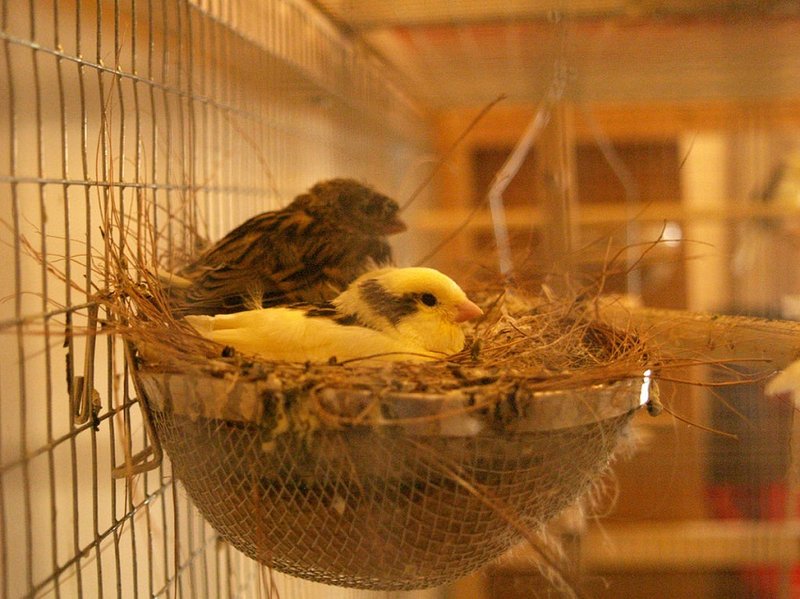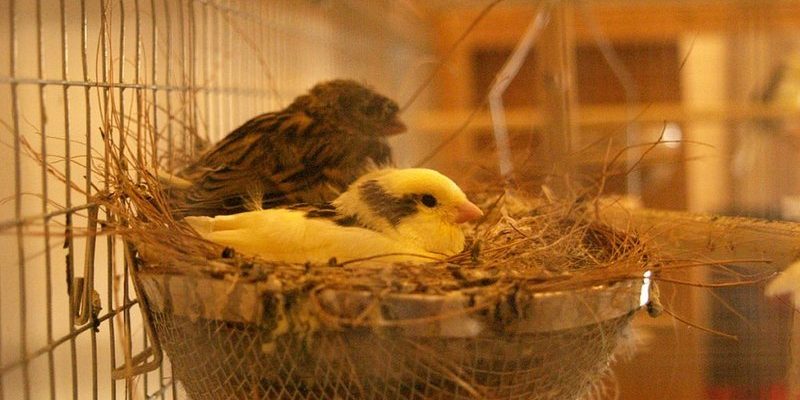
Canaries are not just pretty singers; they’re also avid nest builders. Understanding how they nest and develop can give you insights into their behavior, health, and overall well-being. Whether you’re a canary owner or just curious, the more you know about these delightful birds, the better you’ll appreciate their charm. So, let’s dive into the captivating world of canaries!
Nesting Preferences of Canaries
Canaries are pretty particular about where they decide to set up their homes. When it comes to nesting, they prefer quiet and cozy spots that feel safe. In the wild, canaries often nest in shrubs or trees, using natural materials to create a secure environment for their young. If you have a pet canary, replicating these conditions can be incredibly beneficial.
What Do Canaries Use for Nesting? They’re resourceful little creatures! Their nests are generally made from a mix of materials like:
- Grass
- Feathers
- Plant fibers
- Hair or wool
Canaries often show interesting behaviors when selecting materials. You might see your canary picking up bits of fluff or strands of grass, arranging them just so. It’s as if they’re decorating their little home to make it perfect!
Choosing the Right Nesting Location
If you’re thinking about helping your canary find a suitable nesting spot, here’s what to consider:
1. Privacy: Canaries like their space. Placing their nest in a quiet corner of the cage, away from direct sunlight or constant movement, can help make them feel secure.
2. Temperature and Safety: The nesting area should be warm but not hot. Avoid locations near drafts or too close to heaters.
3. Accessibility: Make sure your canary can easily access the nest without being disturbed by other pets or loud noises.
Setting up a good nesting area can encourage your canary to breed, which leads us to the exciting part of their lifecycle!
The Breeding Cycle of Canaries
When the time is right, canaries engage in a beautiful mating ritual. The male often sings to attract a female, showcasing his vibrant personality. Once a pair has bonded, they can begin the process of breeding.
How Long Is Their Breeding Season? Typically, canaries breed during the spring and summer months when conditions are optimal for raising young. You’ll notice your canary becoming more active and vocal. It’s like they’re putting on a show to impress their partner!
The female lays anywhere from 2 to 6 eggs, which are usually white or light-colored. After laying her eggs, she’ll spend most of her time in the nest, keeping them warm and protected.
The Incubation Period
Now that the eggs are laid, the incubation period begins. This is usually around 13 to 14 days. During this time, the female takes on the majority of the responsibilities.
Here’s what happens during incubation:
– The female frequently sits on the eggs, carefully turning them to ensure even warmth.
– She will leave the nest occasionally to feed, but only for short periods, ensuring her eggs are safe.
It’s quite a commitment! The male also plays a supportive role, bringing food to the female while she’s on the nest. It’s a great example of teamwork in the bird world.
Hatching and Early Development
Once the incubation period ends, the eggs begin to hatch. You might hear soft chirping sounds coming from the nest—this is a sure sign that something exciting is happening!
When the chicks finally break free, they are completely dependent on their mother. Here’s what you can expect during this fragile phase:
– Feeding: The mother feeds her chicks a diet rich in proteins and fats to help them grow strong. This includes a mix of seeds, insects, and greens.
– Growth: In the first week, the chicks grow rapidly, starting to develop feathers and becoming more active.
It’s amazing to witness! As days pass, you’ll see the chicks turn into tiny versions of their parents, ready to explore their surroundings.
Fledging: The Transition to Independence
Around three weeks after hatching, the chicks will start to leave the nest, a process known as fledging. This is a big milestone in a canary’s life.
During this time, they will:
– Practice flying: You might notice them flapping their wings and making short hops.
– Begin eating on their own: While they still rely on their parents, they’ll start to nibble on seeds and other foods.
It’s a bit like watching a teenager learn to drive—exciting and nerve-wracking! The mother and father canaries will continue to care for them, offering food and protection, but soon the chicks will be fully independent.
The Life Cycle of Adult Canaries
Once canaries reach maturity, they’ll generally live for about 10 to 15 years. During this time, their personality really shines. Adult canaries can be vibrant and social, thriving in environments where they have space to sing and interact with others.
As adult canaries, they are:
– Vocal: Many develop unique songs, especially males trying to attract females. It’s their way of showcasing personality!
– Territorial: Males may establish their territory, especially during breeding season, using songs to warn off others.
Keeping canaries as pets means enjoying their playful antics and beautiful songs throughout their lives, knowing that their journey started as tiny eggs in a cozy nest.
Caring for Nesting Canaries
If you’re a canary owner, understanding their nesting habits and lifecycle is vital to their well-being. Here are some tips for caring for your nesting canaries:
1. Provide a Suitable Nest: You can buy or make a nesting box filled with appropriate materials. Just ensure it’s clean and safe.
2. Diet: A balanced diet rich in seeds, fruits, and greens is essential for both breeding pairs and their chicks.
3. Monitor Health: Keep an eye on your birds around breeding time. Stress or illness can affect their ability to nest successfully.
4. Avoid Disturbance: During incubation, try not to disturb the birds too much. It’s a crucial time for them.
By being attentive to their needs, you can support your canaries through their nesting journey, making it a rewarding experience for both you and your feathered friends.
In conclusion, canaries are fascinating creatures with unique nesting habits and a captivating lifecycle. From the joyful songs of mating rituals to the tender care of their chicks, each phase of their lives adds to their charm. Understanding these behaviors not only enhances your appreciation of them but also fosters a more nurturing environment for your canaries. Happy bird watching!

